excursions
The Symposium excursions will take place on the afternoon of Wednesday March 27. They will be filled on a first-come, first-served basis until full. The fee will be due in cash at the Symposium registration on Sunday March 24 at 4:00-5:30 p.m., or Monday March 25 at 8:30-9:00 a.m. Snacks and drinks will be provided during the excursions.
Please download and flll in the Excursion Registration Form before March 15, and return it to us via e-mail.
________________________________________________________________________
 Bird Watching in the Ludo Area, Ria Formosa
Bird Watching in the Ludo Area, Ria Formosa Natural Park
Maximum number of people: 15
Cost: 10 Euros
‘Ludo’ is a nature sanctuary and walking trail in the Ria Formosa Natural Park. Its diverse ecosystem is considered a rarity in the Algarve and includes forest, agricultural land, fresh water, and marine environments. Within these there are important faunal and floral species, some of them endemic or with limited distribution.
 The main attraction in this area is the diversity of bird species, especially waders and aquatic birds. The saltpans are an important refuge for numerous species that vary throughout the year. In early spring you can still see some winter birds, such as cormorants, flamingos, ducks (gadwall, teal, pochard and shelduck), and waders (dunlin, sanderling, ringed plover, bar-tailed godwit and curlew). Avocets and black-winged stilts also inhabit this area, as well as great-crested grebes, herons, coots and Kentish plovers. You can also see spoonbills and little terns.
The main attraction in this area is the diversity of bird species, especially waders and aquatic birds. The saltpans are an important refuge for numerous species that vary throughout the year. In early spring you can still see some winter birds, such as cormorants, flamingos, ducks (gadwall, teal, pochard and shelduck), and waders (dunlin, sanderling, ringed plover, bar-tailed godwit and curlew). Avocets and black-winged stilts also inhabit this area, as well as great-crested grebes, herons, coots and Kentish plovers. You can also see spoonbills and little terns. 
Your guide for this hike will be from the Ria Formosa Natural Park. This will be a 4 km walk on flat terrain. If you have your own binoculars, please bring them, otherwise we can provide them.
________________________________________________________________________
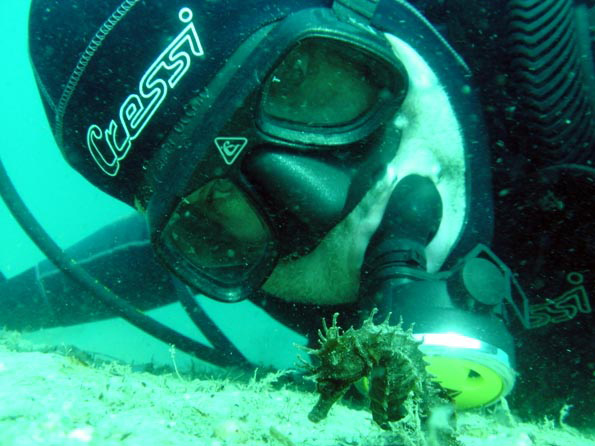 Diving with Seahorses in the Ria Formosa
Diving with Seahorses in the Ria Formosa Maximum number of people: 24
Cost for Diving: 65 Euros
Cost for Snorkelling: 45 Euros
**All gear included.
The Ria Formosa Estuary is a designated Natural Park, and has been elected as one of the 7 Natural Wonders of Portugal. It is approximately 18,000 hectares in size, and is protected from the sea by 5 barrier-islands and 2 peninsulas. It was once known to have one of the highest densities of seahorses in the world, although the population has decreased in recent years.
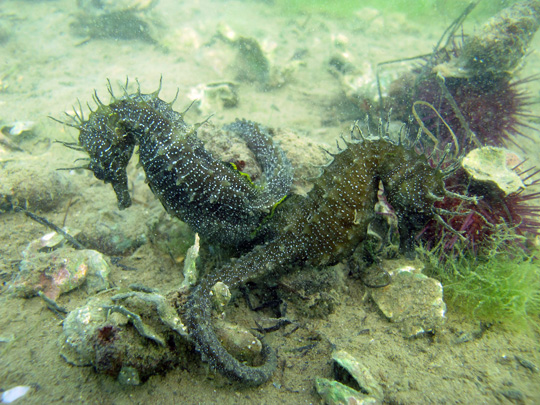
Two species, Hippocampus guttulatus (long-snouted seahorse) and Hippocampus hippocampus (short-snouted seahorse) are found among the seagrass and other available habitat. Researchers at the University of the Algarve are studying seahorses in the lagoon to determine their abundance, the cause of the population decline, and possible conservation solutions, including the use of artificial holdfast units.
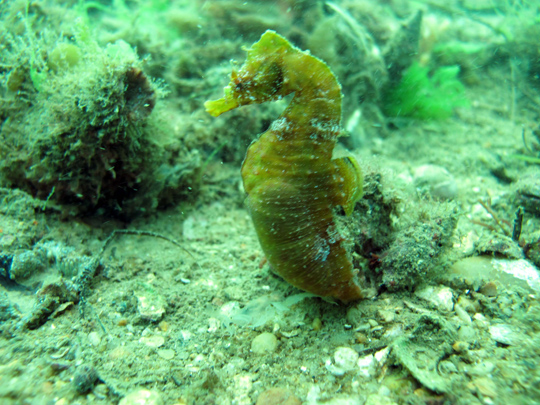 This trip will be run by the diving company Hidroespaco. Our researchers will join you on the dive to talk about current research at the University of the Algarve. As well as seahorses, be prepared to see many other species such as octopus, urchins, stonefish, rays and more.
This trip will be run by the diving company Hidroespaco. Our researchers will join you on the dive to talk about current research at the University of the Algarve. As well as seahorses, be prepared to see many other species such as octopus, urchins, stonefish, rays and more. Please note: This will be a one-dive trip. It is a shallow dive of approximately 3 m so snorkellers are also welcome. All dive and snorkel gear will be included, unless you indicate otherwise. The sea temperatures at this time of year are normally between 15-18°C. Please bring a current copy of your dive card and fill in the required information on the registration form. This excursion is dependant on the weather on the day!
________________________________________________________________________
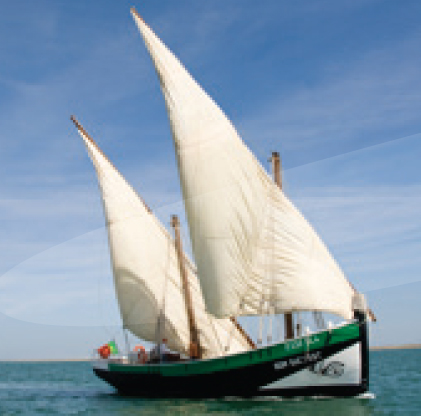 Voyage aboard the Caique Bom Successo in the
Voyage aboard the Caique Bom Successo in the Ria Formosa
Maximum number of people: 20
Cost: 15 Euros
The Caique Bom Successo (“Good Success”) is an18m long traditional wooden sailing vessel whose home port is Olhão, just east of Faro. In the 18th century, Olhão was one of the most important ports in the whole of Portugal, and seafarers used caiques such as this one for fishing and to transport merchandise. This particular vessel is a replica of the original Caique Bom Successo, which has a glorified history.
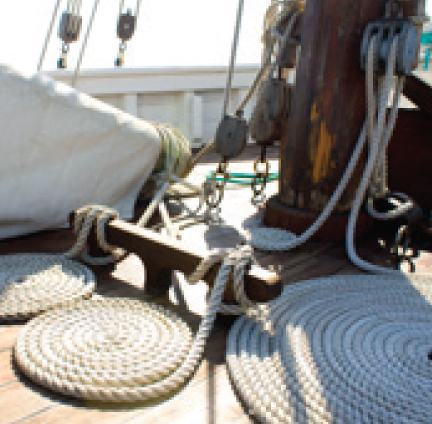
In 1808 when the Portuguese court took refuge in Rio de Janeiro during the Napoleonic Invasion there was an uprising in Olhão and the caique was sent to deliver the good news of the invaders’ expulsion to Brazil with a crew of 17 fishermen. With no maps and no navigational instruments, these men from Olhão crossed the Atlantic. The voyage took 2 months and was one of the most notable feats in Portuguese maritime history.
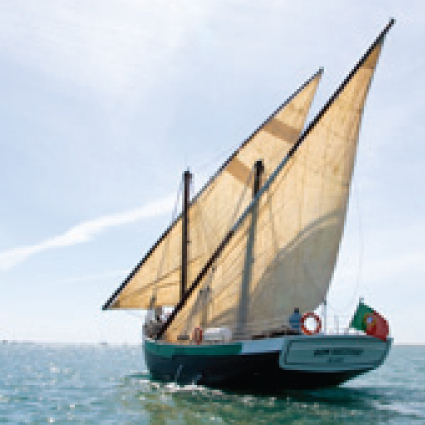 The caique is now used for promoting cultural and recreational activities in the waters of the Ria Formosa and along the Atlantic coast. Join us for an afternoon on the water learning about the history, culture and wildlife of the area.
The caique is now used for promoting cultural and recreational activities in the waters of the Ria Formosa and along the Atlantic coast. Join us for an afternoon on the water learning about the history, culture and wildlife of the area. 